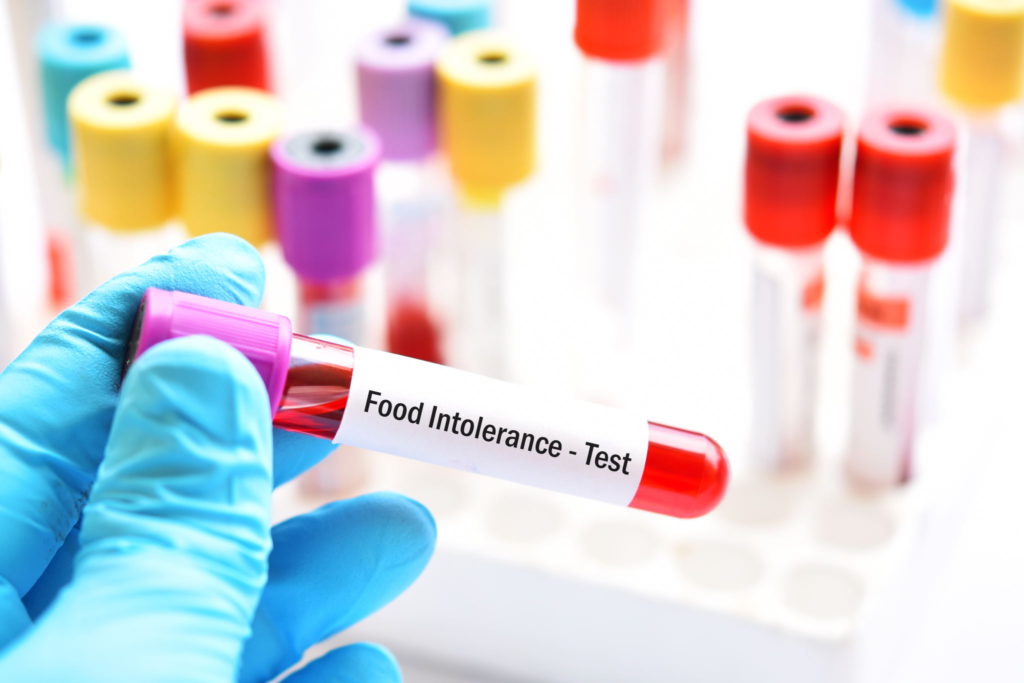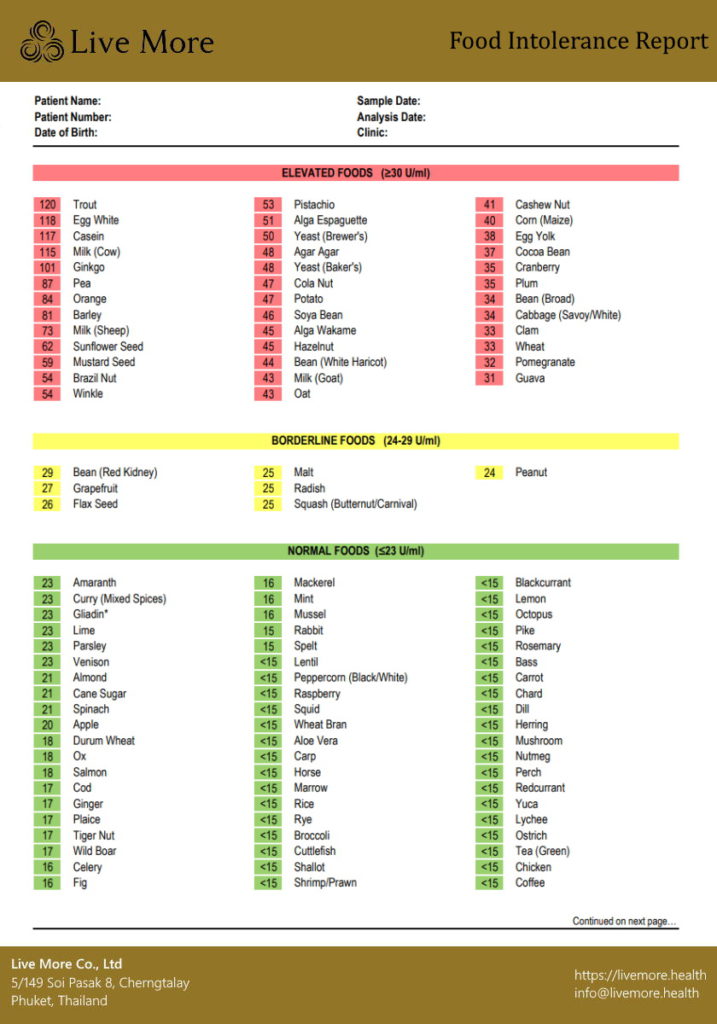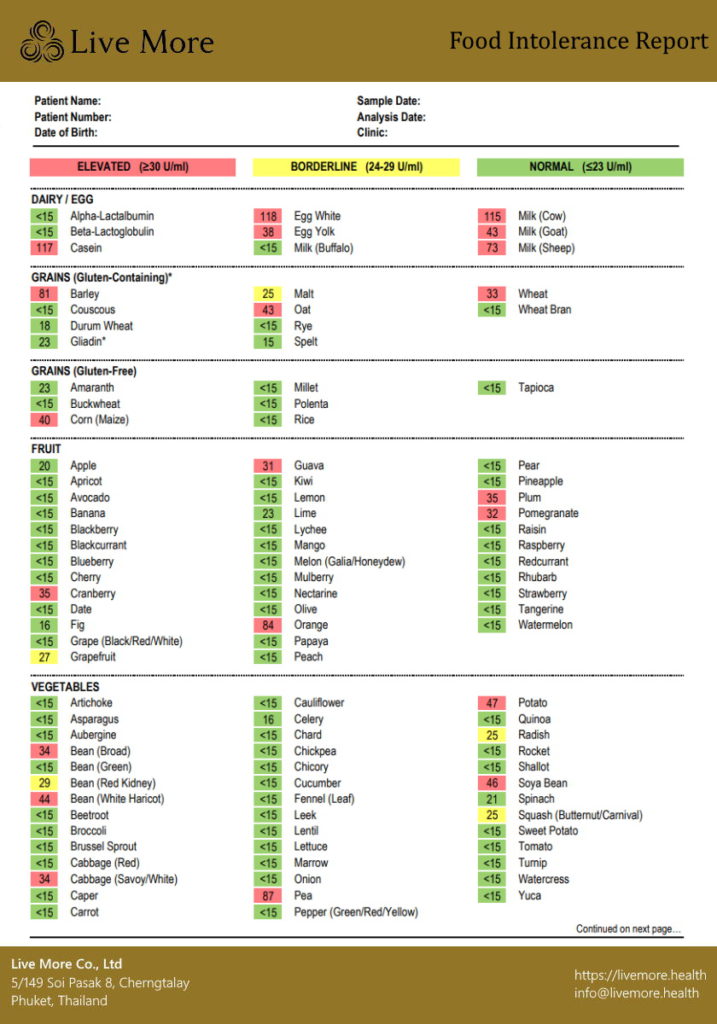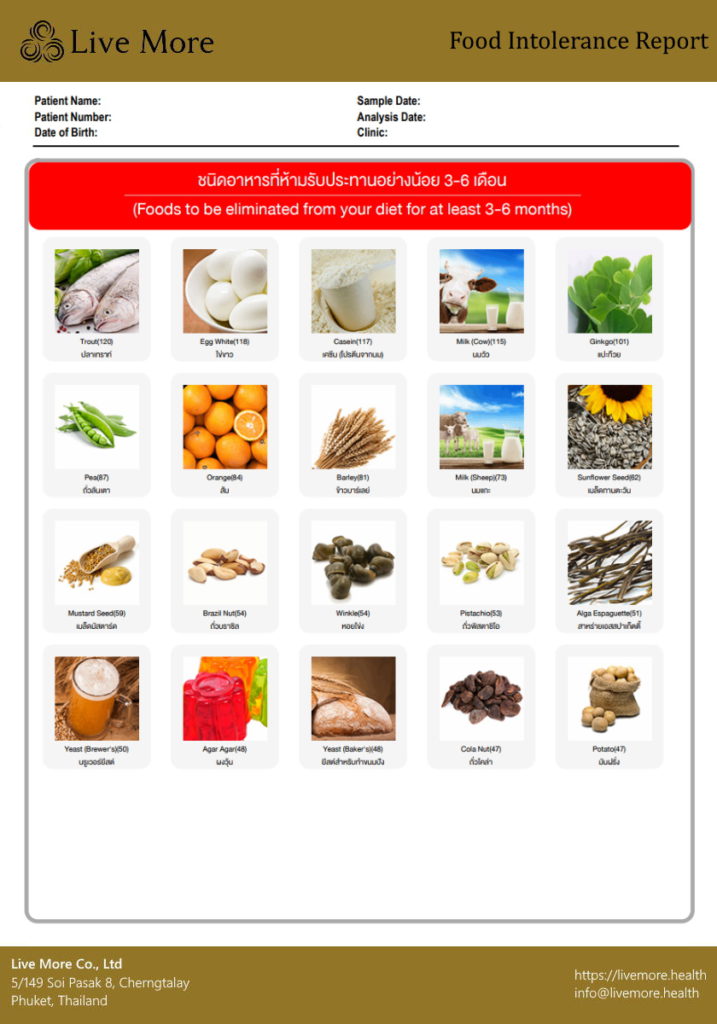Everything you need to know about Food Intolerance Tests
- 23/09/2022
- Resources
- Dr. Deepali Kapahi
A food intolerance is a difficulty in digesting certain foods.
The gut is a very sensitive – but a key – organ. It contains 70% of your immune system, the role of which is to protect you. So, when you think about everything, you’re bombarding your gut with nowadays, including environmental pollution, antibiotics – and, of course, the food you eat, much of which contains additives and chemicals – it’s not surprising that an increasing number of people are experiencing problems.
Here are the main symptoms of food intolerance:
- Stomach pain
- Bloating
- Diarrhea
- Flatulence
- Skin rashes or itching
- Headaches
- Joint pain
If left untreated, food intolerance symptoms can develop into something much more – think chronic inflammation and life-changing conditions such as Hashimoto, IBS, joint pain, unexplained weight gain or weight loss, fibromyalgia, skin problems etc.

The most common food intolerances
Histamine intolerance
Biogenic Amines (aka histamine, tyramine and phenyl ethylamine) are chemicals that naturally occur in food – particularly wine and cheese. Although most people can tolerate these chemicals, if your digestive system is unable to break them down, it can trigger symptoms such as headaches, rashes, stuffy noses, or nausea.
Lactose intolerance
This refers to an inability to digest lactose (milk sugar) because of low levels of the enzyme lactase. Symptoms can include bloating, diarrhoea, wind and abdominal pain or discomfort. It is important to note that lactose intolerance is not an allergy, so it is different to a milk allergy.
Gluten intolerance
This is an intolerance to gluten, which is different from coeliac disease (an autoimmune condition which causes damage to the lining of the gut). Symptoms are like that of coeliac disease, but there is no damage happening to the lining of the intestine.
This type of intolerance is relatively new to be recognized so there is still a bit of debate as to whether it is caused by gluten, or another protein found in wheat.
Caffeine intolerance
Many people find they are sensitive to caffeine which can cause urgent and loose poops, as well as stomach pain, especially in those with an increased sensitivity of the gut, such as those with irritable bowel syndrome (IBS).
FODMAPs intolerance
FODMAPs are types of carbohydrates which are fermented by our gut bacteria which produces gas, as well as several other beneficial compounds used all over the body. In those who have an increased sensitivity of the gut lining (such as those with IBS), this gas production can trigger symptoms such as abdominal pain, bloating, wind, diarrhoea or constipation.
FODMAPs intolerance
FODMAPs are types of carbohydrates which are fermented by our gut bacteria which produces gas, as well as several other beneficial compounds used all over the body. In those who have an increased sensitivity of the gut lining (such as those with IBS), this gas production can trigger symptoms such as abdominal pain, bloating, wind, diarrhoea or constipation.

The difference between food intolerance and food allergy
Food allergies involve a whole body immune IgE (immunoglobulin E) response and can cause severe, and even life-threatening symptoms such as rashes, hives and difficulty breathing. Food intolerances however do not involve the immune system and cause gastrointestinal distress such as diarrhea, bloating and stomach pain. Intolerances are not life threatening.
A typical food allergy reaction
- Antibodies develop immediately following contact with the allergen and can be potentially life-threatening
- Tends to be limited to one or two foods per person – such as fish, eggs, nuts, and cow’s milk
A typical food intolerance reaction
- Symptoms develop gradually – perhaps following a couple of hours or even days
- On average, a few foods will cause problems, anything with a protein can be a trigger
Sometimes it can be difficult to tell the difference between food allergies and food intolerances.
If you suspect you have a food allergy, it’s important to speak with a Wellness advisor / Nutritionist / Doctor. To find out whether you have an allergy or an intolerance, the doctor will likely order diagnostic tests.
If you’re allergic to a food, your doctor will advise you on how to manage it. Your doctor may also refer you to a registered dietitian to help with managing your diet.
Book Your Consultation
At Live More, we use the Food Intolerance test to help create a treatment plan to help get your health back on track. Book a consultation with our specialists or visit our clinic to find out more.


